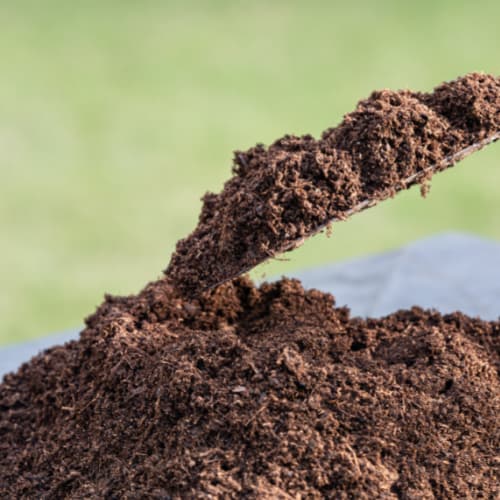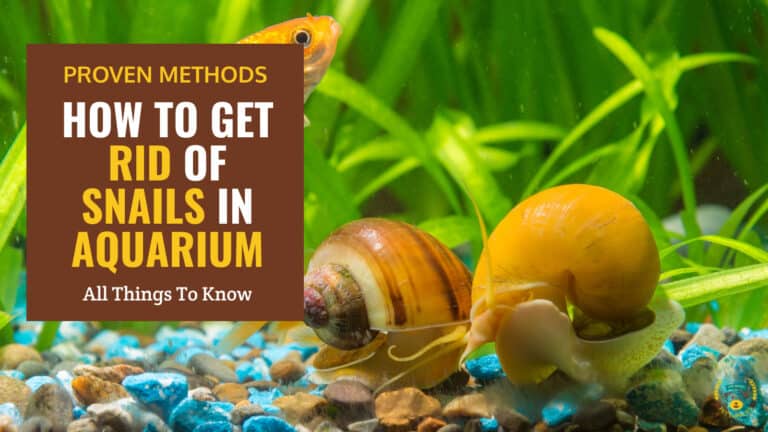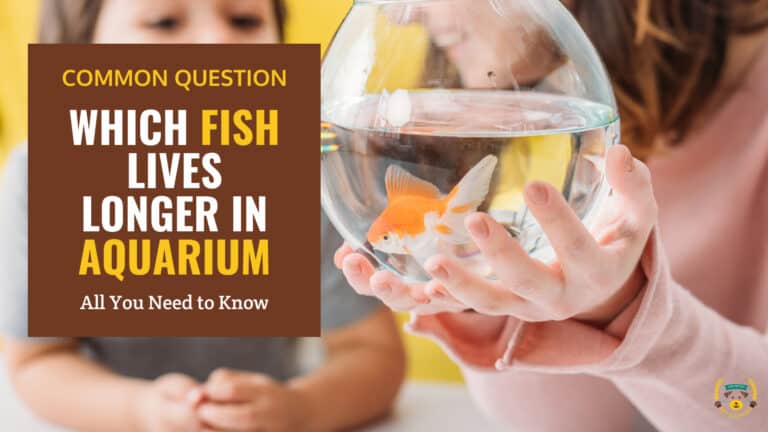How To Soften Aquarium Water? 3 Safe and Easy Ways
Last updated: April 6, 2024

Summary
- Many fish like tetras and rams as well as most aquarium plants thrive best in soft water with low GH.
- Hard alkaline water can lead to mineral buildup and clogging issues. It also prevents nutrient absorption. Softening prevents these problems.
- Specialized filter media like zeolites and ion exchange resins directly remove minerals that cause hardness.
- Chemicals like phosphates and RO water allow precise control over hardness levels.
- Natural methods like peat, driftwood, leaves, and substrates gently soften water while adding beneficial tannins.
- Aim for an ideal general hardness of 2-8 dGH. Use a combination of methods and acclimate fish slowly when altering hardness.
- Test parameters frequently and adjust approaches as needed to strike a balance between softness and essential mineral levels.
Maintaining proper water hardness levels is crucial for a healthy freshwater aquarium. While many fish and plants thrive in moderately hard water, excessively hard or alkaline water can cause a variety of issues. Softening aquarium water with various chemical additives, filter media, or natural methods can provide healthier, stable conditions for sensitive species.
The following chapters will explore these softening techniques in detail, outlining the pros and cons of each method. With so many options available, every aquarist can find a suitable softening strategy to implement in their freshwater tank for healthier inhabitants.

Why Soften Aquarium Water?
There are two main benefits to softening water in a freshwater aquarium:
- Many species prefer soft, acidic water. Fish like tetras, rams, and discus as well as most plants grow best when water hardness is low. Soft water enhances breeding behavior and reduces stress.
- Hard water leads to scale buildup on tank surfaces and clogged equipment. Precipitated minerals can smother fish gills and block plant nutrient absorption. Softened water prevents these issues.
Targeting an ideal hardness level (2-8 dGH) improves overall health, behavior, cleanliness and aesthetics for soft water species. This makes softening an important tool for any aquarist working with soft water fish or aiming to replicate natural biotopes.
Check Also: Best Floating Plants for Aquarium
In Short, What Are The Best Tank Water Softening Methods?
There are several effective options for safely lowering water hardness, including:
- Specialized chemical filter media that absorb or bind to calcium and magnesium ions.
- RO/DI filtration to completely strip water of minerals.
- Chemical additives like phosphates act as ion exchange resins.
- Natural releases of tannins from botanicals to gently soften water.
Using Filter Media to Soften Water
One effective way to soften aquarium water is by using specialized chemical filter media designed to remove hardness-causing minerals. Different types work in various ways, giving you multiple options.

Activated Carbon
Activated carbon media adsorbs dissolved organic compounds, including minerals like calcium and magnesium that contribute to water hardness. As water passes through, these ions bind to the porous carbon surface.
Regular replacement is key, as the binding sites eventually become full. Activated carbon offers gentle broad-spectrum softening when changed per manufacturer instructions. It works well combined with more targeted softening resins.
Depending on your specific aquarium filter, you should buy appropriate compatible media. However, we do recommend the Aquatic Experts Aquarium Carbon Pad, which can be cut to fit different filter sizes.
Ion Exchange Resins
Ion exchange resins swap hardness mineral ions for more desirable ions like sodium. This directly reduces calcium and magnesium while adding beneficial minerals.
Different resin types include:
- Zeolites - naturally occurring porous minerals that readily exchange ions.
- Synthetic resins - plastic polymer beads customized for softening. These last longer than natural options.
Ion exchange resins must also be replaced regularly as the exchange sites get used up. They provide excellent water softening when maintained properly.
Our recommended option is the Mixed Bed Ion Exchange refillable filter, with the possibility to reuse it with the AQUATICLIFE cartridge refill.
Peat Moss

Peat moss releases tannins and humic acids that lower pH while gently reducing water hardness. The soft, tea-colored water it produces mimics many natural habitats.
Peat does tend to stain water to various degrees. It may also release excess tannins when first added, requiring a break-in period. But over time, it reliably provides a slight softening effect in a naturalistic manner.
Two excellent peat moss filter media include EHEIM's AEH2511051 and Fluval's ClearMax.
Polyphosphate Pads
Polyphosphate resins bind to calcium and magnesium ions. This prevents them from precipitating out as solid deposits on surfaces.
The polyphosphate pads do not eliminate minerals from the water. But they do keep the hardness minerals dissolved in a bioavailable form, rather than coating surfaces as scale.
Used with other filter media, polyphosphate pads provide an extra layer of protection against hard water buildup. They help maintain clean tanks and equipment.
Our recommended option comes in the form of EA's Premium cut-to-fit- filter pad.
Softening with Chemicals
In addition to filter media, you can use certain chemical additives to reduce water hardness. These offer convenience but must be dosed carefully to prevent parameter swings.
Reverse Osmosis (RO)/Deionized (DI) Water
Reverse osmosis filtration removes nearly all total dissolved solids from water, including calcium and magnesium minerals. Blending RO/DI water with tap water allows control over the exact hardness level.
However, RO/DI water lacks beneficial minerals, so only a partial blend is recommended. Also, remineralizing may be needed for fish health. Frequent monitoring is key when dosing pure RO/DI water.
Water Softeners
Traditional water softener salts like sodium chloride work by exchanging hardness minerals for sodium. This reduces calcium and magnesium while increasing sodium content.

Overdosing salt mixes can rapidly crash hardness to unsafe levels. And the excess sodium can harm sensitive species. Salt softening requires careful, gradual dosing paired with frequent testing.
We recommend using the API AQUARIUM SALT with the Kordon NOVAQUA Plus water conditioner for the best results.
Phosphate Supplements
Phosphate compounds bind to free calcium and magnesium ions, reducing water hardness similar to filter media resins. Seachem's PhosGuard is an excellent example.
The effects are temporary as phosphates eventually saturate. So re-dosing is needed over time. When used properly, phosphates offer a quick but short-term chemical hardness reduction.
Chelated Minerals
Chelated trace elements like Seachem Equilibrium bind to metal ions in a way that prevents precipitation. This keeps calcium and magnesium dissolved in the water column instead of forming solid deposits.
The minerals remain present, but in a bioavailable, non-scaling form. Chelated minerals provide a mild softening effect without removing beneficial ions. They help maintain the mineral balance.
Natural Methods for Softer Water
In addition to filter media and chemical additives, there are a few natural techniques you can use to passively soften water and provide beneficial organic compounds. These emulate the soft, tannin-rich conditions found in many freshwater habitats. While not as precise as chemical approaches, natural methods create a more holistic environment.
Peat Moss Extract
One simple way to naturally soften and tint aquarium water is by infusing it with an extract made from peat moss. To make it:
- Place a few handfuls of peat moss in an old pillowcase or mesh bag.
- Soak the peat-filled bag in a bucket of dechlorinated water for 1-2 weeks until the water becomes a soft amber color.
- Remove the peat bag and pour the stained water into the aquarium during water changes to achieve the desired pH and hardness.
The tannins released from the peat moss lower hardness while providing beneficial organic acids. The tea-like tint it produces also gives a natural, blackwater stream effect. However, it can quickly stain the decor and substrate.
We recommend using the Sera Super Peat or Fluval's Aquatic Peat Granules for quick and long-lasting effects.
Driftwood and Leaves

Like peat, driftwood and dried leaf litter like oak or almond leaves contain tannins that will slowly leach into the water to replicate a soft, acidic biotope. The benefits of this technique include:
- Lowers pH and GH naturally over time
- Provides shelter and grazing surfaces
- Stained, tinted water adds ambiance
The degree of softening and staining depends on the specific materials used. This method has more variability than chemical methods but still provides a naturalistic environment.
Reverse Osmosis Water Mixing
For precision control of water hardness, mix pure RO or rainwater with tap to achieve the desired parameters:
- Test tap water GH, then RO/rainwater to determine the mix ratio.
- Gradually increase RO/rainwater percentage during water changes to slowly acclimate fish.
- you can create virtually any hardness level by tweaking the blend.
This gives more control over softening than passive methods. Still, you must ensure adequate mineral levels for fish when using nearly pure RO water.
Natural Substrate

Using sand, fine gravel, or soil substrates can assist in softening water passively:
- Some materials help buffer water parameters in a softer range.
- You can layer minerals like peat or clay beneath the substrate to enhance the softening effects.
The use of a natural substrate provides additional benefits like beneficial bacterial growth. Bear in mind, however, that substrate selection alone will not drastically reduce hardness without other methods.
Natural softening techniques work best in tandem with filter media or chemical supplementation to finetune water parameters. When applied with care, they can transform an aquarium into a thriving, healthy ecosystem.
We suggest using a mix of colorful gravel, sand and natural soil to get the best results. These are our favorite recommended products.
Frequently Asked Questions
Throughout the article's sections, we provided approaches for safely and effectively softening freshwater aquarium water using various filter media, chemical supplements, and natural methods. Here are answers to some frequently asked questions about the impacts of water softening on aquariums:
Will softer water harm my aquarium plants?
Most aquatic plants thrive in softer water, as long as key nutrients like iron are still available. Extremely soft, mineral-deficient water can inhibit growth. Find a balance between softness and nutrients for healthy plants.
Is it possible to eliminate water hardness completely?
Technically yes through heavy use of RO water or ion exchange resins. However, this is usually unnecessary and removes too many essential minerals. Some hardness provides buffering. Aim for 1-4 dGH for most community tanks.
Can I combine chemical and natural softening methods?
Absolutely. A blended approach often gives the best results. For example, use driftwood combined with a water softener, or peat filtration with RO water mixing during changes. Just monitor water parameters closely when using multiple methods.
How often should I change filter media when softening water?
It all depends on the media... activated carbon should be replaced every 4-8 weeks; ion exchange resins are changed per manufacturer instructions; polyphosphate pads are to be replaced when saturated.
Monitor your water hardness and replace media as needed to maintain target levels.
What water hardness level is best for most aquarium fish?
A good target range is 2-8 dGH (degrees of general hardness). Soft water fish like tetras prefer <5 dGH. Rift lake cichlids need harder water around 8-12 dGH.
Adjust the water hardness to match your stock, then acclimate fish slowly when altering it.
Final Thoughts
In this article, we explored a variety of methods for safely and effectively softening water in freshwater aquariums. These include using filter media, chemical supplements and natural techniques.
Each approach has its own advantages and drawbacks. Often the best solution is to use a combination of methods tailored to your specific aquarium setup and inhabitants. For example, blending RO water with tap during water changes while using a small amount of peat filtration.
When altering water chemistry, remember to acclimate fish slowly to prevent shock. Monitor parameters closely and adjust as needed to strike the right balance between softness and essential mineral levels. With some experimentation, you can achieve the ideal aquarium water hardness for healthy, thriving fish.






